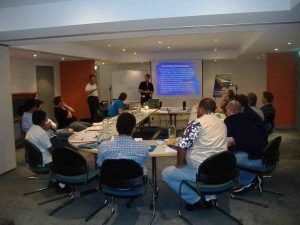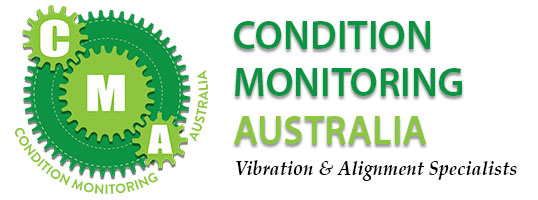Training and Support
Training
 We believe in sharing knowledge. With our extensive experience in condition monitoring across all types of industries, we are able to assess your training needs and either provide basic or advanced Condition Monitoring courses or customised in-house training.
We believe in sharing knowledge. With our extensive experience in condition monitoring across all types of industries, we are able to assess your training needs and either provide basic or advanced Condition Monitoring courses or customised in-house training.
Setting up your CM program in-house
Many of our customers would like to build an in-house CM program. We can experience in setting up programs in different ways. CMA can provide initial monthly routine collection and analysis to building your own in house CM team.
Customised Courses
Although the content of the course is well structured it is our belief, at CMA, to provide the client with a course which meets their requirements. Each course is customised to meet the participants skills and knowledge level and in this way aims at advancing the participants one step at a time, ensuring that a high retention rate is achieved. The use of the clients own machines as examples, instead of sterile laboratory test rigs, also assists in this aim.
A Condition Monitoring Course – not a sales pitch
The sole aim of these courses is to up skill the participants in the area of Condition Monitoring. The course will be tailored to suit any brand of CM equipment that the client may have and in this way, valuable time will not be wasted on trying to convert the participants to an unfamiliar system. Instead their level of confidence with their own CM equipment will be dramatically boosted.
Basic CM
CMA’s “Basic Condition Monitoring Training Course” is an intensive 1 day, onsite, workshop style course, which achieves its success by heavily involving the participants in practical examples of condition monitoring
Topics covered include:
- The philosophy of Condition Monitoring
- Fundamentals of vibration
- Condition Monitoring techniques for different machines
- Monitoring and Inspecting Machines
- Basic spectral analysis
- Basic Data collector/Analyser Functions
Advanced CM
CMA’s “Advanced Condition Monitoring Course” is an intensive 2 day, onsite, workshop style course. This course is generally offered as an extension to the Basic CM Course or to those who have had some experience in CM. We also cover root cause failure analysis – The determination of the Root Cause of a failure is the only true way for a CM program to develop. The CMA Advanced Condition Monitoring Course will greatly assist your CM Program by identifying practical areas for improvement.
Topics covered include:
- Failure Mechanisms
- Vibration problems with specific machinery types
- Detecting stages of bearing failure
- Extending the life of Rolling Element Bearings
- Condition Monitoring System Set-up and Management
- Creating effective Frequency Band Alarms
- Root Cause Failure Analysis
 Laser Alignment Course for Fitters.
Laser Alignment Course for Fitters.
A Practical course – the aim of these courses is to up skill the participants in the area of Laser Alignment. The course will be tailored to suit any brand of equipment that the client may have and in this way, valuable time will not be wasted on trying to convert the participants to an unfamiliar system. Instead their level of confidence with their own Laser equipment will be dramatically boosted. CMA trainers have many years’ experience using the following systems: Gloi, Damalini Easy Laser, Pruftechnik Rotalign and Optalign, and SKF Laser Alignment Systems.
Dynamic Balancing Training
Understanding how a machine is operating will enable the trial weight to be located in a position that will improve, rather than increase the vibration. Learn how a quick and basic examination will result in fewer runs and therefore a faster and safer correction.
Using Displacement allows for a direct correlation between High Spot (what the accelerometer sees) and Heavy Spot (where the unbalance is).
Much can be learnt by examining the change in magnitude and phase during the initial run-up and later coast down to understand the nature of machine running condition, related to natural or “critical” frequency excitations. Most drives can be balanced using a very simple and easy to follow procedure.
